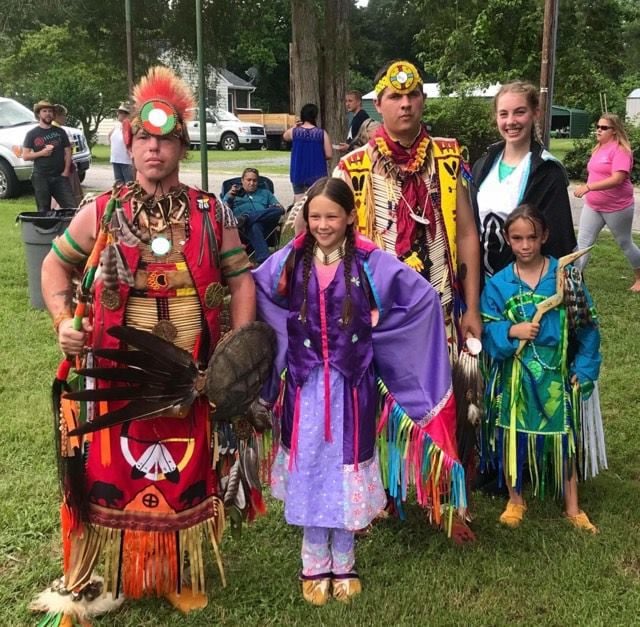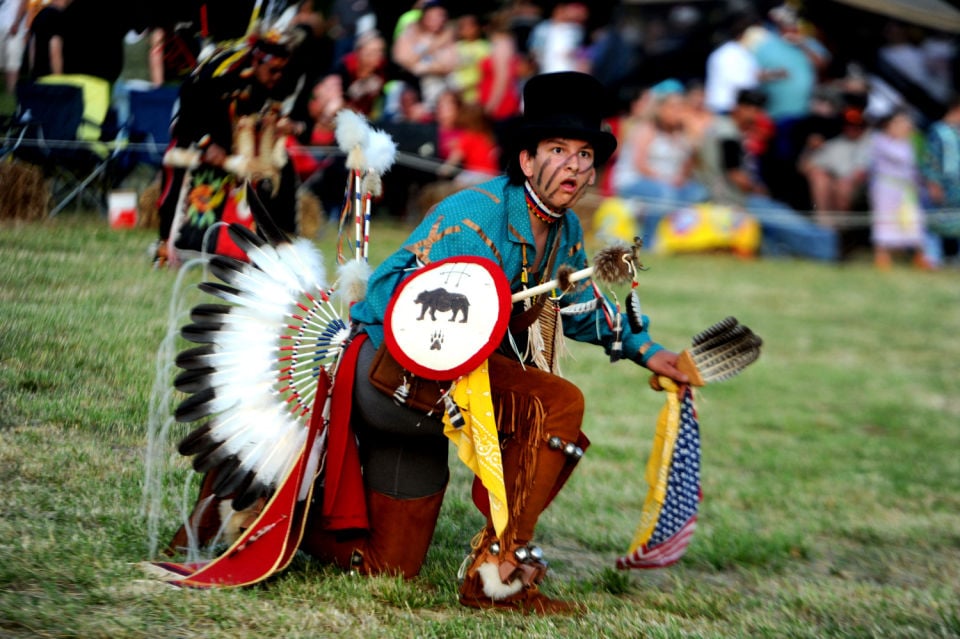
The Enduring Heart of Virginia: The Monacan Indian Nation’s Journey from Ancient Roots to Federal Recognition
For centuries, the Monacan Indian Nation has been an indelible part of Virginia’s landscape and history, their presence predating the arrival of European colonists by millennia. From the ancient burial mounds that dot the Piedmont region to the enduring community clustered around Bear Mountain in Amherst County, their story is one of profound cultural resilience in the face of relentless erasure. It is a narrative woven with threads of deep heritage, systematic persecution, and an unwavering, decades-long fight for their rightful place in the American mosaic: federal recognition.
The Monacan people are descendants of the original Siouan-speaking inhabitants of Virginia’s interior, distinct from the Algonquian-speaking Powhatan Confederacy of the coastal plains. Their ancestral lands spanned the vast Piedmont, from the Blue Ridge Mountains to the fall line of the major rivers, including the James, Rivanna, and Rapidan. Archaeological evidence, including the elaborate Monacan Indian Nation Museum and Cultural Center built on ancestral grounds near Natural Bridge, points to a sophisticated and settled culture. These were skilled farmers, hunters, and traders, known for constructing large earthwork mounds for burials and ceremonial purposes, a testament to their complex social and spiritual structures. The name "Monacan" itself is believed to mean "people of the big river," referencing their intimate connection to the waterways that sustained them.
When English colonists arrived in Jamestown in 1607, they encountered the Monacan people, initially documenting them through the writings of Captain John Smith. Early interactions, like many others across the continent, were fraught with misunderstanding, disease, and territorial disputes. The Monacan Nation, like other indigenous groups, suffered devastating population declines due to European diseases to which they had no immunity and relentless encroachment on their lands. Over time, various Siouan-speaking groups, including the Saponi, Tutelo, and Manahoac, coalesced and intermarried, seeking strength in unity as they were pushed further inland. By the 18th century, many Monacans had retreated to the relative isolation of the Blue Ridge foothills, establishing communities like the one that would endure for generations around Bear Mountain in Amherst County. Here, they maintained their distinct identity, language, and cultural practices, often out of sight of the dominant colonial and later, state, authorities.
However, the 20th century brought a new, insidious form of assault on their identity, far more devastating than open warfare: a bureaucratic genocide. In 1924, Virginia passed the notorious Racial Integrity Act, a cornerstone of the eugenics movement and white supremacy. This law, championed by Dr. Walter Ashby Plecker, the head of Virginia’s Bureau of Vital Statistics, enshrined the "one-drop rule," classifying anyone with any discernible non-white ancestry as "colored." Crucially, it specifically targeted Virginia’s Indian tribes. Plecker, a fervent white supremacist, refused to acknowledge the existence of any "true" Indians in Virginia, believing that all people claiming Indian heritage were simply "mixed-race" individuals attempting to pass as white to avoid the stigma of being Black.
Plecker’s directive was unambiguous and brutal. He ordered birth certificates, marriage licenses, and other vital records to be altered, reclassifying Monacan individuals and members of other Virginia tribes from "Indian" to "colored" or "Negro." He even wrote letters to local registrars, chastising them for allowing "Indian" designations and instructing them to change records. This administrative tyranny, often referred to as "pencil genocide" or "paper genocide," stripped thousands of Monacans of their legal identity, severing their documented ties to their heritage and creating immense genealogical confusion. It prevented them from marrying outside their race without severe legal penalties, accessing education, or receiving services designated for "Indians." For decades, the Monacan people lived under a cloud of fear, their very existence denied by the state, forcing them further into isolation to protect their children and maintain their cultural integrity.

Despite this concerted effort to erase them, the Monacan community at Bear Mountain endured. They held onto their traditions, their family histories, and their sense of self, passing down knowledge and identity through oral tradition and tight-knit community bonds. They were "hidden in plain sight," as Chief Kenneth Branham, a prominent Monacan leader, would later describe it. The fight for recognition began subtly in the mid-20th century, as community members started the arduous process of reconstructing their fragmented family trees, piecing together evidence of their continuous existence.
The first major breakthrough came in 1989 when the Commonwealth of Virginia formally recognized the Monacan Indian Nation. This state recognition was a vital step, acknowledging their historical and contemporary presence within Virginia. It was a moment of profound validation, but it was only the first skirmish in a much larger war for federal acknowledgement.
The journey for federal recognition is notoriously complex, expensive, and time-consuming. It typically involves demonstrating continuous existence as a distinct community since first contact, maintaining political authority over its members, and proving descent from a historical tribe. For the Monacan Nation, the challenge was compounded exponentially by Plecker’s systematic destruction of records. Proving continuous identity and lineage through state-sanctioned documentation was nearly impossible. The Bureau of Indian Affairs (BIA) recognition process, with its stringent and often inflexible criteria, proved to be an insurmountable hurdle given the intentional erasure of their past.
Recognizing the futility of the BIA route, the Monacan Nation, alongside five other Virginia tribes, pivoted to seeking federal recognition through an act of Congress. This legislative path required extensive lobbying, building bipartisan support, and educating members of Congress about their unique history and the injustice perpetrated by the state of Virginia. The tribes had to demonstrate not only their continuous existence but also the extraordinary circumstances that led to the absence of the typical documentation required for BIA recognition. They presented mountains of genealogical research, historical analyses, and anthropological reports, painstakingly demonstrating how they had survived as a distinct people despite the state’s efforts to deny their identity.
The legislative battle spanned decades, facing numerous setbacks and political obstacles. Bills were introduced, stalled in committees, and died with the end of congressional sessions. Yet, the Monacan people, with the support of their allies, refused to give up. Their perseverance was a testament to their unwavering commitment to justice and the preservation of their heritage.
Finally, after years of relentless advocacy, the tide turned. In 2018, the Thomasina E. Jordan Indian Tribes of Virginia Federal Recognition Act (H.R. 984 / S. 691) made its way through Congress. The bill, named in honor of a distinguished leader of the Virginia Council on Indians, sought to grant federal recognition to six Virginia tribes, including the Monacan Nation, circumventing the BIA process due to the unique historical circumstances of Plecker’s "paper genocide."
On January 12, 2018, the bill passed the House of Representatives, and a week later, it passed the Senate by unanimous consent. On January 29, 2018, President Donald Trump signed the act into law. The moment was met with overwhelming joy and relief within the Monacan community and across the other federally recognized Virginia tribes. After nearly a century of fighting the ghost of Walter Plecker and enduring the bureaucratic maze of Washington, the Monacan Indian Nation was finally, unequivocally, and federally recognized.
Federal recognition is not merely symbolic; it carries profound implications. It affirms the Monacan Nation’s inherent sovereignty, allowing them to govern themselves, manage their own affairs, and protect their cultural resources. It grants them access to federal programs and services designed for Native American tribes, including healthcare, housing, education, and economic development initiatives. It also opens avenues for land-in-trust applications, potentially allowing the Nation to reclaim and manage portions of their ancestral lands. As Chief Branham articulated, federal recognition means "we can finally be who we are… without having to explain or justify it." It allows the Monacan Nation to rebuild, heal, and thrive, secure in their identity and heritage.
Today, the Monacan Indian Nation is actively engaged in cultural revitalization efforts, including language preservation, traditional arts, and historical education. They are working to strengthen their governance structures, develop economic opportunities, and provide essential services to their members. The Monacan Indian Nation Museum and Cultural Center stands as a beacon, sharing their story with the public and serving as a repository of their enduring culture.

The journey of the Monacan Indian Nation from ancient mound builders to a federally recognized tribe is a powerful testament to the indomitable spirit of indigenous peoples. It is a story of survival against calculated oppression, of resilience in the face of erasure, and of the unwavering pursuit of justice. Their struggle highlights the profound and lasting damage inflicted by racist policies like the Racial Integrity Act, but more importantly, it celebrates the enduring strength of a community that refused to be silenced, ensuring that the heart of Virginia will forever beat with the rhythm of its original people.


